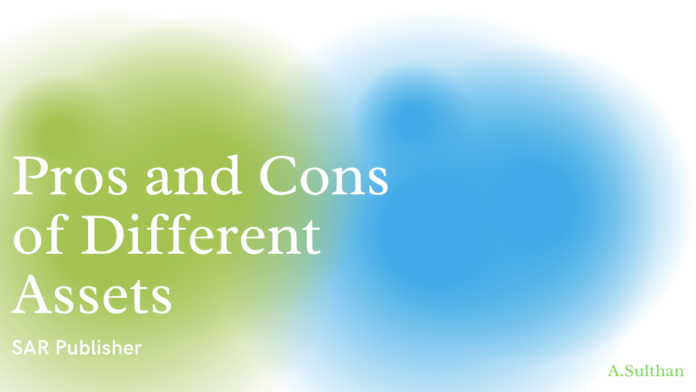An asset class is a set of assets or financial products in which money is invested. Typically, all products in a single class exhibit similar traits in terms of safety, returns and liquidity, as well as the manner in which they respond to market conditions and other variables. These are not your classic definitions, but a broad classification where assets are clubbed under respective buckets. The objective of such classification is to enable investors to make an asset allocation that is right for their financial goals and needs.
“Investing money is the process of committing resources in a strategic way to accomplish a
specific objective.” – Alan Gotthardt
Fixed Income
One of the most popular forms of investment, and also the oldest, fixed income assets typically include debt instruments like Fixed Deposits (FDs) and Recurring Deposits (RDs), Public Provident Fund (PPF), Pension Schemes, National Savings Certificates (NSC), Bonds,
etc. These are relatively low-risk products and yield a fixed income in the form of interest over a given period, hence known as fixed-income assets.
Typically, these forms of investments are sums that organizations or institutions borrow from retail investors and offer a nominal interest on the principal sum invested. These are also a relatively liquid form of investment and can be redeemed or pledged as collateral if such a need arises.
Fixed-income assets are usually recommended for those who require a fixed sum of money at a given frequency without a large exposure to market conditions. However, as a trade-off, the returns are not very high and typically yield returns that are marginally better than inflation rates.
Pros
- Relatively low-risk category
- Can be easily liquidated
Cons
- Typically yield low returns
- Offers little or no tax savings
Equity
Buying equity shares or mutual funds that invest in equity is bucketed under equity. While it is fairly old, there has been a spike in this form of investment among retail and small investors in recent years. Given the exposure to the open market, this is a relatively high-risk investment category. It is recommended for someone who has a healthy appetite for risk. Equity investment does not necessarily yield a predictable return, nor does it
follow a fixed frequency. Hence, it is not recommended as a primary source of income for
beginners. That said, equities do offer a substantially higher return, and if managed well
can yield the highest return among all asset classes.
For beginners, it is advisable to opt for equity Mutual Funds. It is essentially a corpus of fund pooled from small investors and invested in the stock market. This is typically done by an asset management company or MF house. The fund is managed by a professional fund manager who looks after the selection of stocks and other assets for a given fund.
Pros
- Among the highest return category
- Can be easily liquidated
Cons
- Required time to assess, monitor and manage
- Risk can be high
- No Tax Saving
Real estate
Real estate refers to land or property in the form of a residential house, commercial plot or
freeholding land. While traditionally real estate was looked at as the first investment option, Indians have started to look beyond it. Apart from investment, one of the reasons that real estate been a top choice is that it is a part of basic human needs. This interest in real estate has resulted in the appreciation of prices and has yielded some healthy returns. However, being a capital intensive investment avenue, it is not recommended for individuals starting their investment journey. It also requires a careful analysis of a number of factors that may impact the current and future value of the investment.
Pros
- Consistent appreciation in value
- Safe against Inflation
- Offers tax savings
Cons
- Requires high investment and longterm commitment
- Liquidating such assets can be Time consuming and loss in value
Gold
Gold is one of the oldest and classic forms of holding assets. It is a good example of physical commodities as an asset class. Looked at as a treasured commodity, the popularity of gold in India has no parallel. Be it in the form of bullion (coins, bars etc.) or jewellery, it is considered among the safest forms of holding asset. It is so due to the inherent properties of the metal that also makes it a crucial medium in which countries and many central banks hold their reserves. A typical investor is unlikely to trade in gold as he or she would in stocks or MFs. The relatively stable and consistent growth in the price of gold makes it an attractive proposition for long term holding. And this is also what contributes to the consistent purchasing power of gold that neither diminishes nor appreciates greatly. It generally remains above the inflation and occasionally, even outstrips it. Gold in paper form (e.g. sovereign gold bonds) has gained popularity lately. Investment in gold in form of bonds or gold ETF or digital gold has removed some of the disadvantages related to this commodity.
Pros
- Nearly no risk category
- Can be easily liquidated without losing value
Cons
- Risk of theft if held physically
- Gold in form of jewellery incurs making charges and risk of fraud
Cash and Cash Equivalent
While it is an asset class because of its value, cash cannot be considered a financial product or an investment. It is rather an enabler of investment. Usually, individuals keep cash for conducting day-to-day transactions or as a reserve for emergency or unanticipated expenses. On the other hand, cash equivalents are similar to cash or bank balance and could be in the form of foreign exchange or flexible fixed deposits that can be liquidated instantaneously as and when required.
Pros
- It is fully liquid by default
- The safest way to protect value against external factors
Cons
- Risk of theft if held physically
- Least appreciation in value
- Returns will almost always be less than inflation
Asset Classes and Features
| Asset Class | Returns | Liquidity | Safety |
| Government Bonds, Treasury Bills, Tax-free, Bonds, National Saving Certificates, Fixed, Deposits with Scheduled Banks, Saving Bank and Recurring Deposits |
L | M | H |
| Deposit schemes of PSUs / Infrastructure Companies/Blue chip Companies, ULIPs/Insurance products |
M | L to H | M |
| Mutual Funds Products, Debentures, Corporate Bonds, Fixed Deposits, Preference Shares, Commercial paper, Certificate Deposits, Treasury Bonds |
M | L to H | M |
| IPO/FPO Direct Investment in Equity | H | L to H | L to M |
| Collective Investment Schemes, Hedging, Derivative Trading, Currency Swaps, Credit Default Swaps (CDS), Collateralized Debt Obligation (CDO) |
H | M to H | L |
Key: L – Low, M – Moderate, H – High.
Source: Ministry of Corporate Affairs, Primer for First-time Investors




